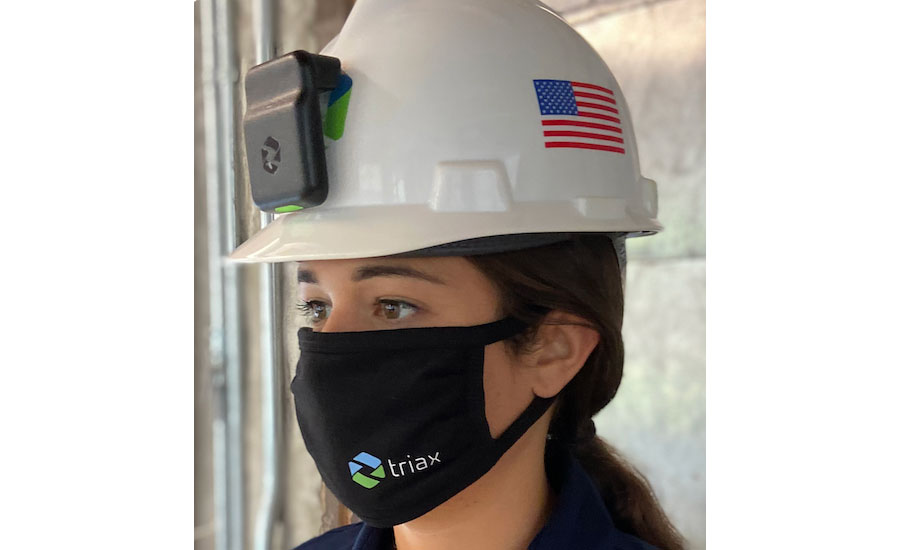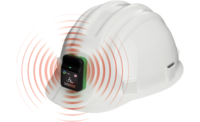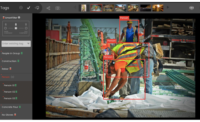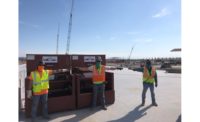When the COVID-19 pandemic led to the closure of construction sites in the spring of 2020, technology firm Triax Technologies looked for how it could help. The company’s worker-safety tracking tag could locate workers on site for safety incidents, but there was a sudden demand for ways to maintain social distancing due to COVID-19.
The company responded with Proximity Trace, which could track workers coming and going on site and beep when they got too close and violated social distancing. The new tags didn’t require the mesh network base stations of the full-featured Spot-r clips. They only logged tag-to-tag interactions.
Triax is now offering a firmware upgrade to bring new features to the Proximity Trace tags beyond COVID-19 regulatory compliance.
The new product, Spot-r Radius, offers the same wireless worker-to-worker awareness, but it can be used for geofencing and hazard warnings as well, explains Robert Constantini, Triax CEO.
“Say you want to be sure workers are alerted in advance to an open hazard, we can create a digital caution tape effect,” he says. Beacons can be set up to signal workers’ tags with an audible alarm if they are near a hazard zone, and safety managers can review contact data to see if workers were in danger.
Spot-r Radius can also be used for access control at gates and tracking worker certifications for heavy equipment, adds Constantini.
Wearables: Still Hurdles to Adoption
"When it comes to wearables, it’s important that we get the most benefit from the least number of solutions so that workers are not burdened by donning a pile of cumbersome devices in addition to their PPE and other trade-specific tools each day," says Rose Hall, vice president and head of construction innovation for North American construction at AXA XL. "The Spot-r Radius cleverly combines many valuable use cases into one device—providing both passive data collection and real-time interaction with the worker which may help protect workers and prevent injury."
As a subsidiary of insurance giant AXA, AXA XL has formed partnerships with 35 technology firms in its "Construction Ecosystem" program, an effort to provide technology adoption advice to industry firms. Triax is one of these technology partners.
Hall says wearables have been gaining usage, but an expected acceleration in adoption during the pandemic may have been overly optimistic.
"As an industry, we really must do better to protect our workforce. In the midst of COVID-19, I anticipated that wearables would get a much needed boost in adoption—since contact-tracing and social-distancing wearables actually enabled workers to continue to work safely. Unfortunately, I was wrong!"
The disruption from the pandemic was real, but other things still need to change, says Hall. "There appears to a similar amount of cultural resistance to wearables by workers as there was before the pandemic, and not enough perceivable benefit from the general contractor to make it a mandatory requirement. Hopefully the additional use cases that Spot-r Radius provides will help shift this perception and accelerate adoption."
Beyond safety, there are also potential business benefits to knowing what is happening on the jobsite. Uses for Big Data have been found elsewhere in the construction process, but Hall says wearables still have a ways to go.
"I believe the first frontier of the construction technology revolution is adoption. After that, data integration, and after that—predictive analytics as the end goal too. Once we get adoption of wearables in a more prominent spot, I anticipate that the contributions to Big Data will be vast."






Post a comment to this article
Report Abusive Comment